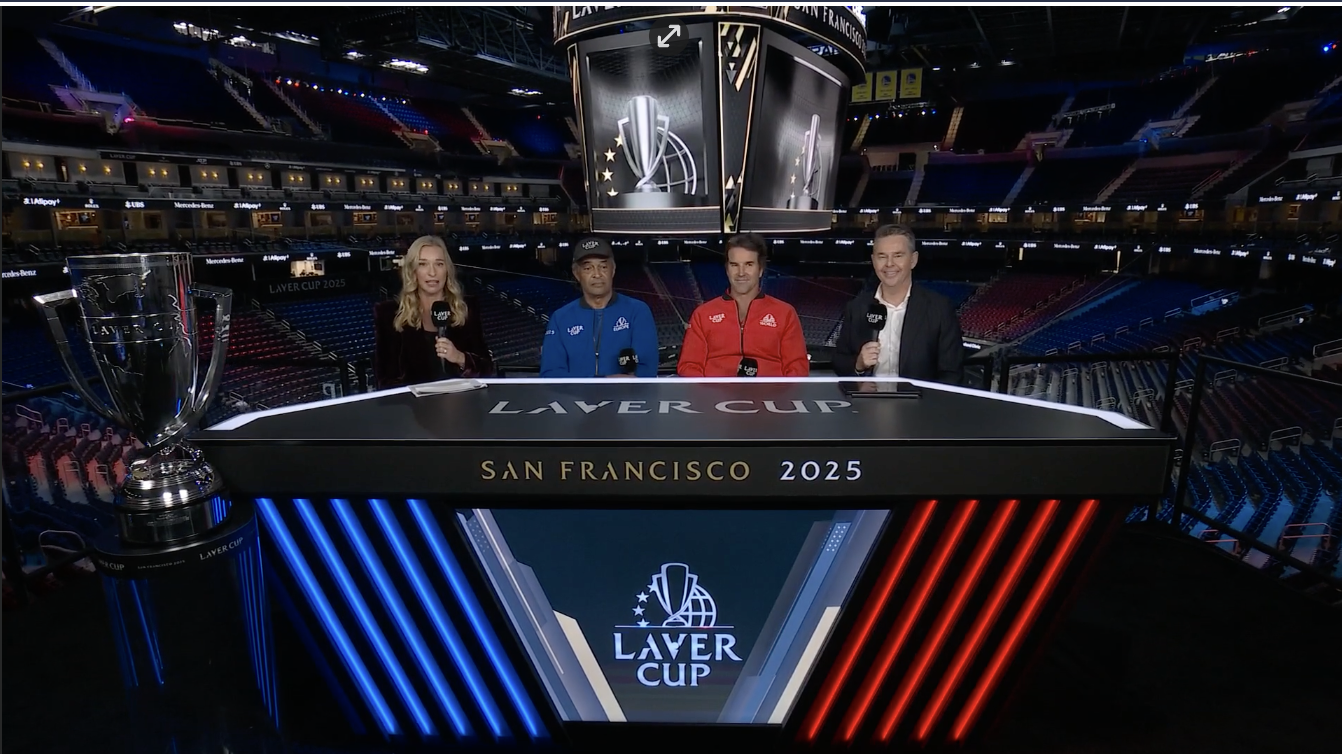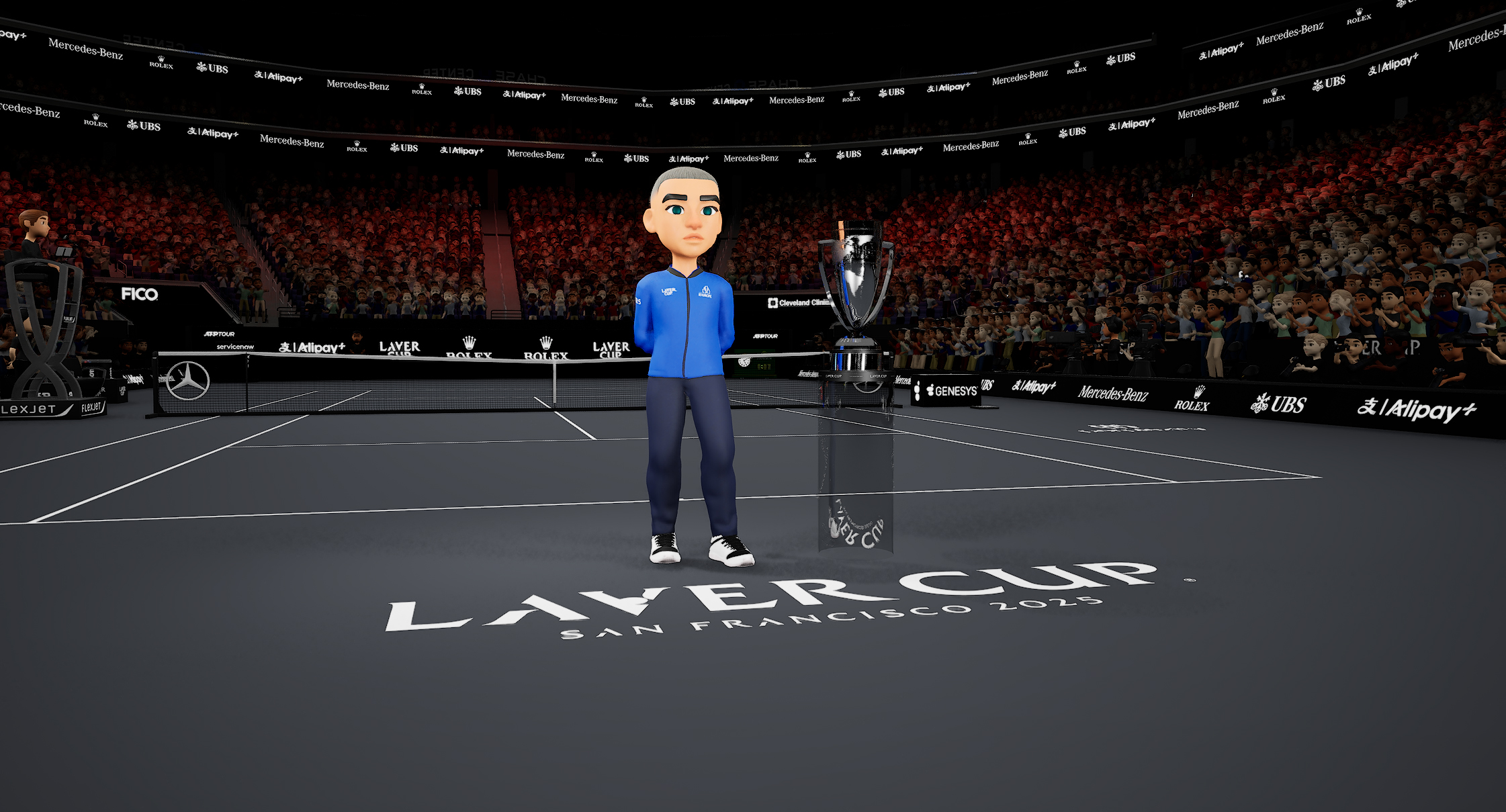Laver Cup 2025: Tennis Australia Take Over Chase Center; AR Set To Shine for 1080p HDR Effort
Gravity Media, Live Media Group support team of 50+ from Down Under
Story Highlights
Some of the best players in professional men’s tennis will battle in a team competition this weekend, with Europe taking on The World in the Laver Cup at San Francisco’s Chase Center. Off the court, though, the focus is on global cooperation as Tennis Australia, the USTA, and Team 8 Sports & Entertainment create an event that continues to gain traction since its first edition in 2017.
Josh Lee, head of broadcast and media operations, Tennis Australia, and about 50 Tennis Australia and production professionals have traveled in from Australia to handle the majority of production services for the event (the arena show, broadcast production, non-live and original content), which begins in earnest with the first singles match at 1 p.m. PT today and concludes on Sunday night.

The Laver Cup this weekend will feature a new broadcast desk that features LED panels displaying results and more.
“Unlike with the Slams,” he says, “we don’t have 14 or 15 days to dial everything in; there are only five sessions over three days. From ball one, we’ve got to make sure all the crew, cameras, and mics covering the court and the team zone are hitting their mark.”
Chase Center is home to the NBA’s Golden State Warriors and has replaced the hardwood with a single hardcourt on which Europe and The World will vie for global tennis supremacy. Preparations have been easier than usual — previous Cups required construction of temporary grandstands — saving about three days and making energy levels heading into the first day higher than usual.
“The whole venue has been fit out to a very high level,” notes Lee. “UK-based Design Works came in and fit out the back-of-house areas for the players in a very purpose-fit way. And the look and feel in the arena with the blue and red wash, the lighting, and the huge jumbotron makes it a striking event from a production standpoint.”
For an individual sport, the event’s team aspect has led to team zones and bench areas outfitted with cameras and microphones. “That’s a key element of this production,” he adds. “During the sit-downs, there are interactions between the captains and the players. The players have bought in to the event, so you get great content from that area.”
Cameras Include Four With AR Capabilities
More than 50 cameras will cover the action on the court, definitely giving it a world-class tennis production.
“We have 31 remote pan-and-tilt PTZ cameras as we have extensive behind-the-scenes coverage,” Lee explains. “But we’re also testing out remote pan-and-tilt control of big box lenses with both ACS and Fletcher. More and more, there’ s a push to reduce the footprint around the court. The operators will still have a field of view of the court [so they can see what is happening outside of the viewfinder].”
As for production trucks, Gravity Media is always a key supplier for Tennis Australia, but Live Media Group is also involved.
“Gravity Media doesn’t have a huge truck fleet here in the U.S.,” he explains, “so we have three Live Media Group trucks and have outboarded some of the technical and monitoring positions. Telstra Broadcast Services are helping with distribution; they are also in the truck dock [to handle the 1080p HDR-native signals that we are handing off to Tennis Channel].”
Among other production elements are a new host desk with an LED ticker and 60-in. monitor to show scores and updates, a four-point Spidercam system, a Sony FX6 camera to capture shallow–depth-of-field shots courtside, a DreamChip camera to capture the action at 400 fps, and the Girraphic G-CAM, which is side-on to the court and allows overlay of AR graphics within the lines of the court.
“We can do head-to-heads, player bios, and even show stats throughout the event,” says Lee. “And, for the first time, we’re using AirPixel technology with Girraphic to be able to put AR graphics over a wireless Steadicam. We can use that while the players are on court warming up; we’ll be able to show some AR graphics while they’re walking off court. This is the first time we’re using that technology, and I think it’s something we’ll see in January [at the Australian Open].”
Overall, four cameras will have AR capabilities: the Steadicam, Spidercam, G-CAM, and a drone, which will fly over the Bay,
Although the centerpiece will be the on-court action, secondary streaming options will offer other coverage, most notably a livestream of each team bench area.
“[We’re producing] a dedicated Benchcam stream with audio and four cameras from each bench as a second-screen offering for people in the Chase Center or at home,” says Lee. “We’re also doing an animated feed, which got a lot of attention at the Australian Open last January. Our AO Labs team created animated avatars [for each player], and we use Bolt 6 player and tracking data to create that feed.”
One slight tweak to the Carlos Alcaraz avatar? After a bad haircut from his brother prior to the US Open required him to shave his head, his hair has grown back, but he has dyed it blond. Notes Lee, “We had to quickly update his avatar.”

When Carlos Alcaraz decided to go blond, the Laver Cup production team had to quickly give his avatar a makeover.
Over the next two weeks, the U.S. will host not only the Laver Cup but also the Ryder Cup. Both events are a breath of fresh air for the respective production teams, who put in long hours, long days, and long travel.
“All the crew love working this event,” says Lee. “You get to travel to some of the best venues in the world that haven’t seen tennis for a very long time or, in some cases, have never hosted tennis at all.”
